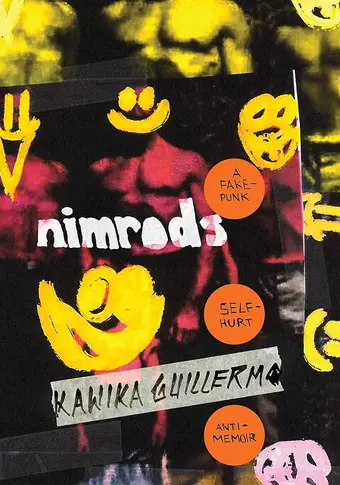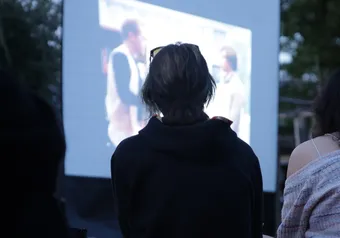Kawika Guillermo’s name was chosen by his mother. It’s Hawaiian; a localization of the Hebrew David, and it meant a lot to her, the daughter of an Ilocano preacher who’d immigrated to Hawai’i.
Decades later, Guillermo writes how his mother’s white American husband rejected the name, so “[his] kids wouldn’t be in that gobbledygook … they’d have right Christian names.” So the baby was christened Christopher Benjamin Patterson, and his father tried to raise him so he’d go to heaven.
Now Guillermo writes poetry with his mother’s name and academic papers with his father’s — as Patterson, an associate professor at UBC in the Social Justice Institute.
In his latest book, Nimrods: A fake-punk self-hurt anti-memoir, Guillermo touches on white guilt and saviourdom, masculinity, academia and the echoes of fatherhood in a series of poetry and prose vignettes set throughout his life.
Guillermo said that he’d always baulked at the idea of writing a memoir, as “they always seem so individual, occupying one particular voice.” His poetic take on the book’s structure came about as a way of overcoming this. It allowed him to “access really dark things. You’re taking the weight off of thinking about the structure and the style, and you’re just getting straight to the raw, unpolished materials [of] reality.”
The book started taking form after he became a father. “If the kid doesn’t sleep you don’t sleep, right?” he joked. “The poetry started to come back with insomnia. Words started to float around and stick with me in ways that they didn’t before.”
“It’s called an anti-memoir partly [because] it’s based on my own experiences but it’s not, in my opinion, really about me,” he said in an interview with The Ubyssey.
Sure enough, Nimrods opens with a crying child waking up his dad. This is Guillermo, who had hoped for a daughter, but got a son. Now he’s afraid of recreating his own father’s baggage.
Here’s our introduction to the memoir’s main narrative focus — the relationship between the author and his alcoholic, fundamentalist Christian father. With stylistic techniques ranging from biblical verse to punk lyric, Guillermo paints an empathetic, yet resentful picture of an abuser formed of ignorance and fear. The character is unable to reconcile his own failures with images that white male dominance have spoon-fed to him since birth.
“This book,” said Guillermo, “is a way of getting through to find a common ground [with him], fatherhood or parenthood being one of them now.”
The memoir is divided like a Greek ode with strophe, antistrophe and epode; each section takes on a unique form and approach to memoir. The first reads like an anthology of separate poems, jumping around from moment to moment, addressing each for only a page or two before moving on to the next.
This creates a hazy overhead view of Guillermo’s life to ground the more detailed second and third sections. Frequently, events introduced in the strophe make their reappearance later, expanded upon or recontextualised through a new perspective.
The formatting of the antistrophe is an obvious parody of the Bible, complete with footnotes and margin notation. It takes on the third-person perspective of Guillermo’s father and cleverly critiques Western religious and social institutions by positioning this angry, hypocritical, self-righteous man as the protagonist of scripture.
The footnotes here are an especially biting touch. They chime in now and again, jarringly direct against the lyrical backdrop, to modify the main text with first-person accounts from Guillermo himself. In the margins, where you’d normally find definitions or translation of archaic language, Guillermo sprinkles impressionistic poetry to set the mood for the accompanying text.
The epode serves as a conclusion to the memoir, bringing up questions of personal and political reconciliation, which he worries may be “just a con, and no amount of armchair thinking can materialise forgiveness.”
Like the rest of the book, this section is shot through with references and quotes from music, literature and YouTube videos. “I’m trying to say a lot in the types of things and people I quote from. [The references] are a part of the poem too,” said Guillermo. These are all compiled in a list at the end of the book, complete with page numbers — I had fun flipping through to find all the easter eggs I’d missed after I was done.
Now Guillermo’s focus is on publicizing both Nimrods and his late wife’s new book Landbridge. He predicts this “will take a lot of thinking, growth and more writing,” alongside the requisite feeding, changing and caring that comes with parenthood.
First online
Share this article








